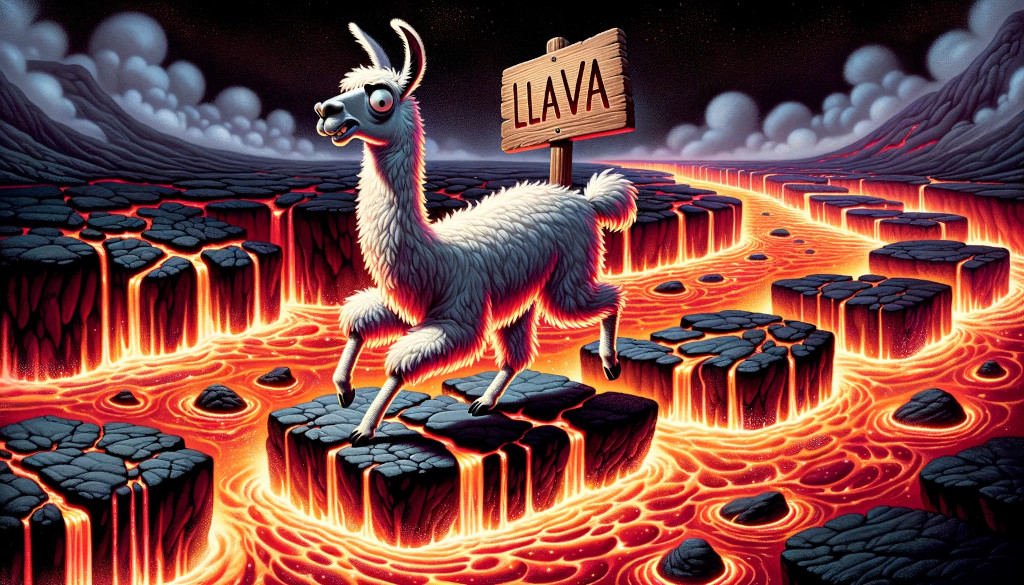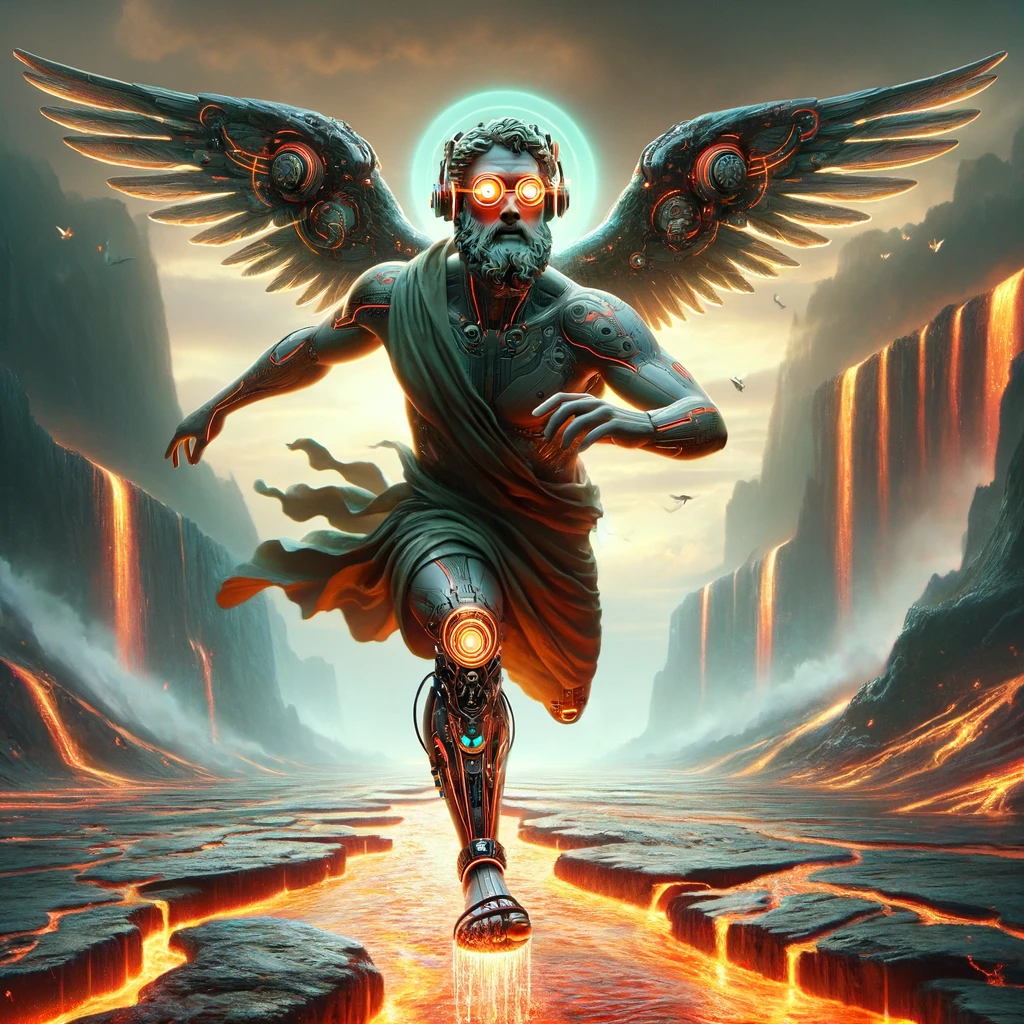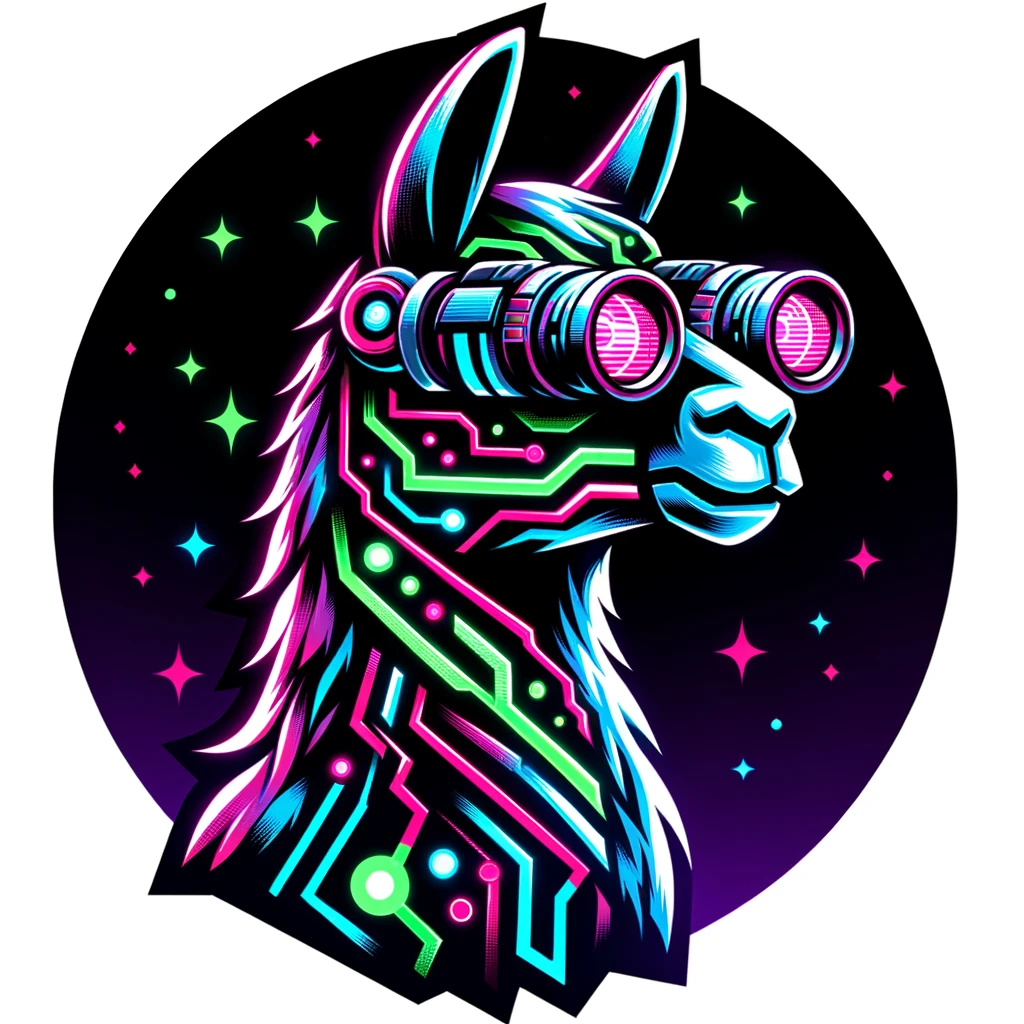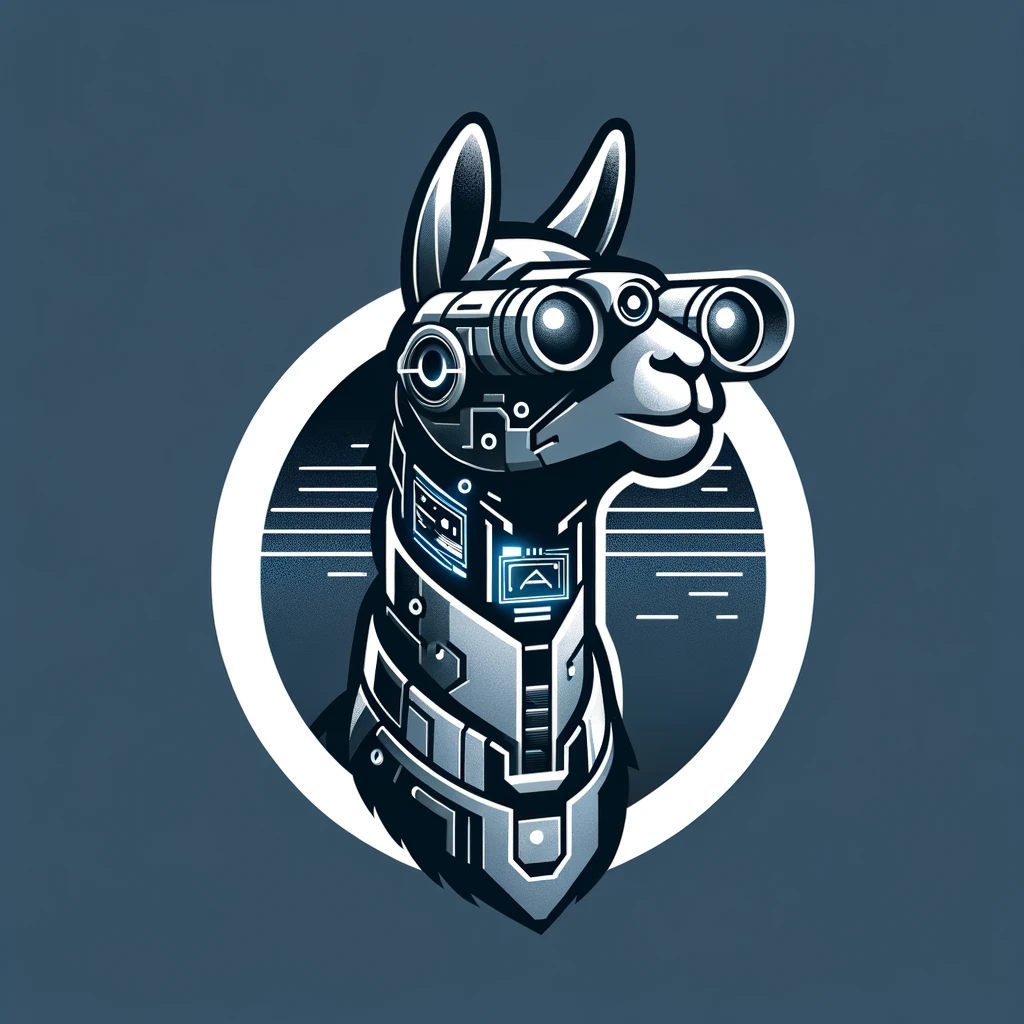llava-13b
Maintainer: yorickvp

11.4K

| Property | Value |
|---|---|
| Model Link | View on Replicate |
| API Spec | View on Replicate |
| Github Link | View on Github |
| Paper Link | View on Arxiv |
Create account to get full access
Model overview
llava-13b is a large language and vision model developed by Replicate user yorickvp. The model aims to achieve GPT-4 level capabilities through visual instruction tuning, building on top of large language and vision models. It can be compared to similar multimodal models like meta-llama-3-8b-instruct from Meta, which is a fine-tuned 8 billion parameter language model for chat completions, or cinematic-redmond from fofr, a cinematic model fine-tuned on SDXL.
Model inputs and outputs
llava-13b takes in a text prompt and an optional image, and generates text outputs. The model is able to perform a variety of language and vision tasks, including image captioning, visual question answering, and multimodal instruction following.
Inputs
- Prompt: The text prompt to guide the model's language generation.
- Image: An optional input image that the model can leverage to generate more informative and contextual responses.
Outputs
- Text: The model's generated text output, which can range from short responses to longer passages.
Capabilities
The llava-13b model aims to achieve GPT-4 level capabilities by leveraging visual instruction tuning techniques. This allows the model to excel at tasks that require both language and vision understanding, such as answering questions about images, following multimodal instructions, and generating captions and descriptions for visual content.
What can I use it for?
llava-13b can be used for a variety of applications that require both language and vision understanding, such as:
- Image Captioning: Generate detailed descriptions of images to aid in accessibility or content organization.
- Visual Question Answering: Answer questions about the contents and context of images.
- Multimodal Instruction Following: Follow instructions that combine text and visual information, such as assembling furniture or following a recipe.
Things to try
Some interesting things to try with llava-13b include:
- Experimenting with different prompts and image inputs to see how the model responds and adapts.
- Pushing the model's capabilities by asking it to perform more complex multimodal tasks, such as generating a step-by-step guide for a DIY project based on a set of images.
- Comparing the model's performance to similar multimodal models like meta-llama-3-8b-instruct to understand its strengths and weaknesses.
This summary was produced with help from an AI and may contain inaccuracies - check out the links to read the original source documents!
Related Models

llava-v1.6-34b

1.4K
llava-v1.6-34b is a Large Language and Vision Assistant (Nous-Hermes-2-34B) developed by yorickvp. It is part of the LLaVA family of large language and vision models, which aim to build models with GPT-4 level capabilities through visual instruction tuning. The model is an upgrade from previous versions, with additional scaling and improvements in tasks like OCR, reasoning, and world knowledge. Similar models include the llava-13b model, also developed by yorickvp, which focuses on visual instruction tuning for large language and vision models. Other related models are the whisperspeech-small model for text-to-speech, the meta-llama-3-8b-instruct and meta-llama-3-70b models from Meta, which are fine-tuned language models, and the incredibly-fast-whisper model, a fast version of the Whisper speech recognition model. Model inputs and outputs llava-v1.6-34b is a multimodal model that can process both text and images. It takes in a prompt, an optional image, and various parameters like temperature and top-p to control the text generation. The model can then generate relevant text responses based on the input. Inputs Image**: The input image, provided as a URL. Prompt**: The text prompt to guide the model's response. History**: A list of earlier chat messages, alternating roles, starting with user input. This can include `` tags to specify which message the image should be attached to. Temperature**: A value between 0 and 1 that adjusts the randomness of the outputs, with higher values being more random. Top P**: A value between 0 and 1 that specifies the percentage of the most likely tokens to sample from during text generation. Max Tokens**: The maximum number of tokens to generate in the output. Outputs Text**: The model's generated response, which can be a continuation of the input prompt or a completely new output based on the provided context. Capabilities llava-v1.6-34b is capable of a wide range of multimodal tasks, including visual question answering, image captioning, and open-ended language generation. The model can understand and reason about the content of images, and generate relevant and coherent text responses. It has also shown improvements in specialized tasks like OCR, document understanding, and scientific reasoning compared to previous versions. What can I use it for? llava-v1.6-34b can be used for a variety of applications that require both language and vision understanding, such as: Image-based question answering**: The model can be used to answer questions about the content of images, making it useful for applications like visual search or assistive technology. Multimodal dialogue systems**: The model's ability to understand and generate text in response to both text and images makes it suitable for building chatbots or virtual assistants that can engage in multimodal conversations. Multimodal content creation**: The model's language generation capabilities, combined with its understanding of visual information, can be used to generate captions, descriptions, or stories that integrate text and images. Specialized applications**: The model's improvements in tasks like OCR and scientific reasoning make it a potential candidate for use in specialized applications like document analysis or scientific research assistance. Things to try One interesting aspect of llava-v1.6-34b is its ability to understand and reason about the context provided by a series of chat messages, in addition to the current prompt and image. This allows the model to maintain a coherent and contextual dialogue, rather than treating each input in isolation. Another interesting feature is the model's ability to follow visual instructions, which enables it to perform complex multimodal tasks that require both language and vision understanding. Developers could explore using the model for applications that involve step-by-step instructions, such as assembly guides or cooking recipes. Overall, llava-v1.6-34b represents a significant advancement in large language and vision models, and its diverse capabilities make it a promising tool for a wide range of multimodal applications.
Updated Invalid Date

llava-v1.6-vicuna-13b

18.5K
llava-v1.6-vicuna-13b is a large language and vision AI model developed by yorickvp, building upon the visual instruction tuning approach pioneered in the original llava-13b model. Like llava-13b, it aims to achieve GPT-4 level capabilities in combining language understanding and visual reasoning. Compared to the earlier llava-13b model, llava-v1.6-vicuna-13b incorporates improvements such as enhanced reasoning, optical character recognition (OCR), and broader world knowledge. Similar models include the larger llava-v1.6-34b with the Nous-Hermes-2 backbone, as well as the moe-llava and bunny-phi-2 models which explore different approaches to multimodal AI. However, llava-v1.6-vicuna-13b remains a leading example of visual instruction tuning towards building capable language and vision assistants. Model Inputs and Outputs llava-v1.6-vicuna-13b is a multimodal model that can accept both text prompts and images as inputs. The text prompts can be open-ended instructions or questions, while the images provide additional context for the model to reason about. Inputs Prompt**: A text prompt, which can be a natural language instruction, question, or description. Image**: An image file URL, which the model can use to provide a multimodal response. History**: A list of previous message exchanges, alternating between user and assistant, which can help the model maintain context. Temperature**: A parameter that controls the randomness of the model's text generation, with higher values leading to more diverse outputs. Top P**: A parameter that controls the model's text generation by only sampling from the top p% of the most likely tokens. Max Tokens**: The maximum number of tokens the model should generate in its response. Outputs Text Response**: The model's generated response, which can combine language understanding and visual reasoning to provide a coherent and informative answer. Capabilities llava-v1.6-vicuna-13b demonstrates impressive capabilities in areas such as visual question answering, image captioning, and multimodal task completion. For example, when presented with an image of a busy city street and the prompt "Describe what you see in the image", the model can generate a detailed description of the various elements, including buildings, vehicles, pedestrians, and signage. The model also excels at understanding and following complex, multi-step instructions. Given a prompt like "Plan a trip to New York City, including transportation, accommodation, and sightseeing", llava-v1.6-vicuna-13b can provide a well-structured itinerary with relevant details and recommendations. What Can I Use It For? llava-v1.6-vicuna-13b is a powerful tool for building intelligent, multimodal applications across a wide range of domains. Some potential use cases include: Virtual assistants**: Integrate the model into a conversational AI assistant that can understand and respond to user queries and instructions involving both text and images. Multimodal content creation**: Leverage the model's capabilities to generate image captions, visual question-answering, and other multimodal content for websites, social media, and marketing materials. Instructional systems**: Develop interactive learning or training applications that can guide users through complex, step-by-step tasks by understanding both text and visual inputs. Accessibility tools**: Create assistive technologies that can help people with disabilities by processing multimodal information and providing tailored support. Things to Try One interesting aspect of llava-v1.6-vicuna-13b is its ability to handle finer-grained visual reasoning and understanding. Try providing the model with images that contain intricate details or subtle visual cues, and see how it can interpret and describe them in its responses. Another intriguing possibility is to explore the model's knowledge and reasoning about the world beyond just the provided visual and textual information. For example, you could ask it open-ended questions that require broader contextual understanding, such as "What are some potential impacts of AI on society in the next 10 years?", and see how it leverages its training to generate thoughtful and well-informed responses.
Updated Invalid Date

llava-v1.6-vicuna-7b

16.7K
llava-v1.6-vicuna-7b is a visual instruction-tuned large language and vision model created by Replicate that aims to achieve GPT-4 level capabilities. It builds upon the llava-v1.5-7b model, which was trained using visual instruction tuning to connect language and vision. The llava-v1.6-vicuna-7b model further incorporates the Vicuna-7B language model, providing enhanced language understanding and generation abilities. Similar models include the llava-v1.6-vicuna-13b, llava-v1.6-34b, and llava-13b models, all created by Replicate's yorickvp. These models aim to push the boundaries of large language and vision AI assistants. Another related model is the whisperspeech-small from lucataco, which is an open-source text-to-speech system built by inverting the Whisper model. Model inputs and outputs llava-v1.6-vicuna-7b is a multimodal AI model that can accept both text and image inputs. The text input can be in the form of a prompt, and the image can be provided as a URL. The model then generates a response that combines language and visual understanding. Inputs Prompt**: The text prompt provided to the model to guide its response. Image**: The URL of an image that the model can use to inform its response. Temperature**: A value between 0 and 1 that controls the randomness of the model's output, with lower values producing more deterministic responses. Top P**: A value between 0 and 1 that controls the amount of the most likely tokens the model will sample from during text generation. Max Tokens**: The maximum number of tokens the model will generate in its response. History**: A list of previous chat messages, alternating between user and model responses, that the model can use to provide a coherent and contextual response. Outputs Response**: The model's generated text response, which can incorporate both language understanding and visual information. Capabilities llava-v1.6-vicuna-7b is capable of generating human-like responses to prompts that involve both language and visual understanding. For example, it can describe the contents of an image, answer questions about an image, or provide instructions for a task that involves both text and visual information. The model's incorporation of the Vicuna language model also gives it strong language generation and understanding capabilities, allowing it to engage in more natural and coherent conversations. What can I use it for? llava-v1.6-vicuna-7b can be used for a variety of applications that require both language and vision understanding, such as: Visual Question Answering**: Answering questions about the contents of an image. Image Captioning**: Generating textual descriptions of the contents of an image. Multimodal Dialogue**: Engaging in conversations that involve both text and visual information. Multimodal Instruction Following**: Following instructions that involve both text and visual cues. By combining language and vision capabilities, llava-v1.6-vicuna-7b can be a powerful tool for building more natural and intuitive human-AI interfaces. Things to try One interesting thing to try with llava-v1.6-vicuna-7b is to provide it with a series of related images and prompts to see how it can maintain context and coherence in its responses. For example, you could start with an image of a landscape, then ask it follow-up questions about the scene, or ask it to describe how the scene might change over time. Another interesting experiment would be to try providing the model with more complex or ambiguous prompts that require both language and visual understanding to interpret correctly. This could help reveal the model's strengths and limitations in terms of its multimodal reasoning capabilities. Overall, llava-v1.6-vicuna-7b represents an exciting step forward in the development of large language and vision AI models, and there are many interesting ways to explore and understand its capabilities.
Updated Invalid Date

llava-v1.6-mistral-7b

18.2K
llava-v1.6-mistral-7b is a variant of the LLaVA (Large Language and Vision Assistant) model, developed by Mistral AI and maintained by yorickvp. LLaVA aims to build large language and vision models with GPT-4 level capabilities through visual instruction tuning. The llava-v1.6-mistral-7b model is a 7-billion parameter version of the LLaVA architecture, using the Mistral-7B as its base model. Similar models include the llava-v1.6-34b, llava-v1.6-vicuna-7b, llava-v1.6-vicuna-13b, and llava-13b, all of which are variants of the LLaVA model with different base architectures and model sizes. The mistral-7b-v0.1 is a separate 7-billion parameter language model developed by Mistral AI. Model inputs and outputs The llava-v1.6-mistral-7b model can process text prompts and images as inputs, and generate text responses. The text prompts can include instructions or questions related to the input image, and the model will attempt to generate a relevant and coherent response. Inputs Image**: An image file provided as a URL. Prompt**: A text prompt that includes instructions or a question related to the input image. History**: A list of previous messages in a conversation, alternating between user inputs and model responses, with the image specified in the appropriate message. Temperature**: A value between 0 and 1 that controls the randomness of the model's text generation, with lower values producing more deterministic outputs. Top P**: A value between 0 and 1 that controls how many of the most likely tokens are considered during text generation, with lower values ignoring less likely tokens. Max Tokens**: The maximum number of tokens (words) the model should generate in its response. Outputs Text**: The model's generated response to the input prompt and image. Capabilities The llava-v1.6-mistral-7b model is capable of understanding and interpreting visual information in the context of textual prompts, and generating relevant and coherent responses. It can be used for a variety of multimodal tasks, such as image captioning, visual question answering, and image-guided text generation. What can I use it for? The llava-v1.6-mistral-7b model can be a powerful tool for building multimodal applications that combine language and vision, such as: Interactive image-based chatbots that can answer questions and provide information about the contents of an image Intelligent image-to-text generation systems that can generate detailed captions or stories based on visual inputs Visual assistance tools that can help users understand and interact with images and visual content Multimodal educational or training applications that leverage visual and textual information to teach or explain concepts Things to try With the llava-v1.6-mistral-7b model, you can experiment with a variety of prompts and image inputs to see the model's capabilities in action. Try providing the model with images of different subjects and scenes, and see how it responds to prompts related to the visual content. You can also explore the model's ability to follow instructions and perform tasks by including specific commands in the text prompt.
Updated Invalid Date